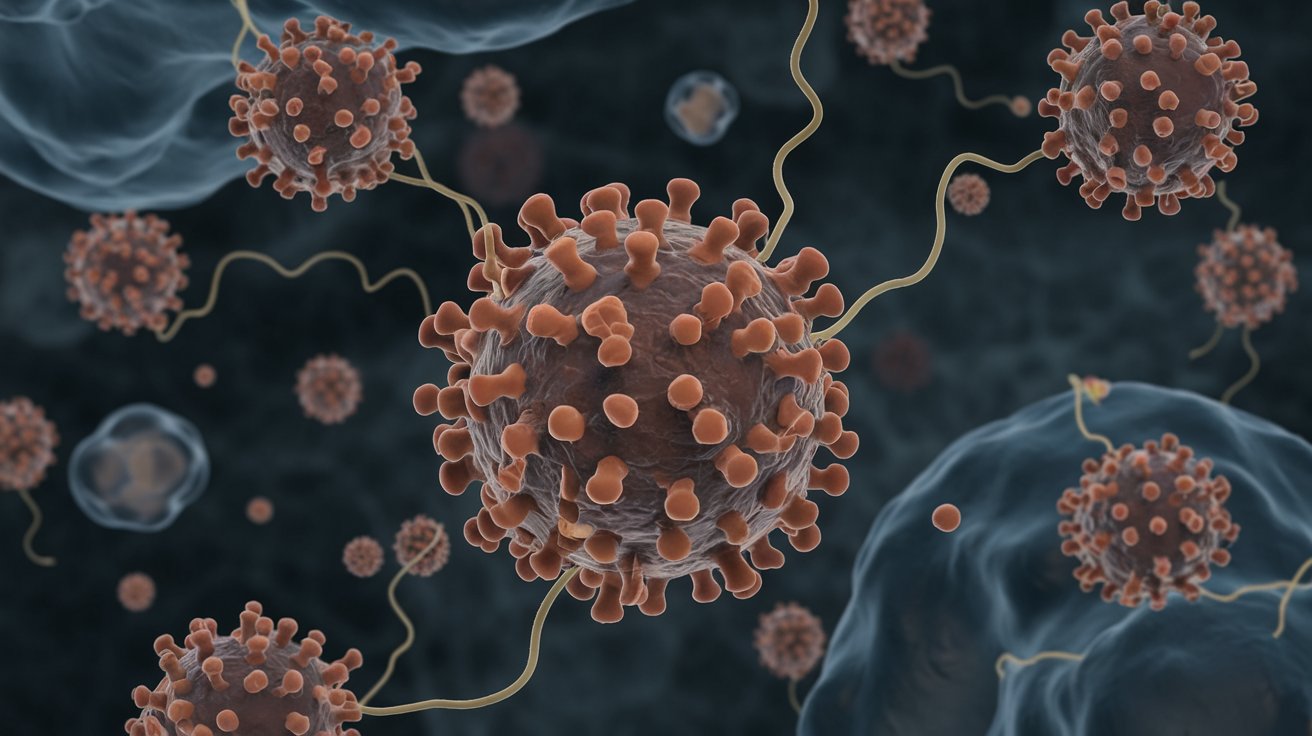
Lipid anchored proteins play crucial roles in cellular functions, but what exactly are they? These proteins attach to cell membranes through lipid molecules, acting as anchors. Why does this matter? Because they help in cell signaling, protein sorting, and maintaining cell structure. Imagine them as the glue that holds various cellular processes together. How do they work? By embedding themselves in the lipid bilayer, they ensure proteins stay in the right place, doing the right job. Understanding these proteins can shed light on many biological processes and diseases. Ready to learn more? Here are 20 fascinating facts about lipid anchored proteins.
Key Takeaways:
- Lipid anchored proteins are crucial for cell functions, sticking to the cell membrane and playing roles in signaling, adhesion, and enzyme activity. They are important for health and can be targeted for disease treatment.
- Scientists use cool techniques like mass spectrometry and fluorescence microscopy to study lipid anchored proteins and understand their structure and function. These methods help unlock the secrets of these fascinating molecules.
What are Lipid Anchored Proteins?
Lipid anchored proteins are fascinating molecules that play crucial roles in cellular functions. These proteins are attached to the cell membrane via lipid molecules. Here are some intriguing facts about them.
- Lipid anchored proteins are attached to the cell membrane through a covalent bond with a lipid molecule.
- These proteins can be found on the inner or outer surface of the cell membrane.
- The lipid anchor helps the protein to stay attached to the membrane, providing stability and functionality.
- Common lipid anchors include glycosylphosphatidylinositol (GPI), prenyl groups, and fatty acids.
Types of Lipid Anchors
Different types of lipid anchors attach proteins to the cell membrane. Each type has unique characteristics and functions.
- GPI anchors are found on the outer surface of the cell membrane.
- Prenyl groups, such as farnesyl and geranylgeranyl, attach proteins to the inner surface of the membrane.
- Fatty acids like myristate and palmitate also serve as lipid anchors.
- The type of lipid anchor can influence the protein's location and function within the cell.
Functions of Lipid Anchored Proteins
Lipid anchored proteins play various roles in cellular processes. Their functions are diverse and essential for cell survival.
- These proteins are involved in signal transduction, helping cells respond to external signals.
- They play a role in cell adhesion, allowing cells to stick to each other and form tissues.
- Some lipid anchored proteins are enzymes that catalyze important biochemical reactions.
- They can also act as receptors, binding to specific molecules and triggering cellular responses.
Lipid Anchored Proteins in Health and Disease
Lipid anchored proteins are crucial for maintaining health. However, their dysfunction can lead to diseases.
- Mutations in genes encoding lipid anchored proteins can cause genetic disorders.
- Some cancers are associated with abnormal lipid anchored protein function.
- These proteins are targets for drug development, as modulating their activity can treat diseases.
- Research is ongoing to understand how lipid anchored proteins contribute to various health conditions.
Techniques to Study Lipid Anchored Proteins
Scientists use various techniques to study lipid anchored proteins. These methods help uncover their structure and function.
- Mass spectrometry is used to identify and characterize lipid anchors.
- Fluorescence microscopy allows visualization of lipid anchored proteins in cells.
- Molecular biology techniques, such as gene cloning and mutagenesis, help study protein function.
- Computational modeling predicts how lipid anchors affect protein behavior and interactions.
The Final Word on Lipid Anchored Proteins
Lipid anchored proteins play a crucial role in cell biology. They help anchor proteins to cell membranes, ensuring proper cell signaling and communication. These proteins are involved in various cellular processes, including signal transduction, cell adhesion, and immune responses. Understanding their function can lead to advancements in medical research, particularly in developing treatments for diseases like cancer and autoimmune disorders.
Researchers continue to study these proteins to uncover more about their mechanisms and potential applications. Their unique ability to interact with both lipid bilayers and other proteins makes them a fascinating subject of study. As science progresses, the knowledge gained about lipid anchored proteins will undoubtedly contribute to new therapeutic strategies and a deeper understanding of cellular functions.
Stay curious and keep exploring the world of cell biology. There's always more to learn and discover.
Frequently Asked Questions
Was this page helpful?
Our commitment to delivering trustworthy and engaging content is at the heart of what we do. Each fact on our site is contributed by real users like you, bringing a wealth of diverse insights and information. To ensure the highest standards of accuracy and reliability, our dedicated editors meticulously review each submission. This process guarantees that the facts we share are not only fascinating but also credible. Trust in our commitment to quality and authenticity as you explore and learn with us.
